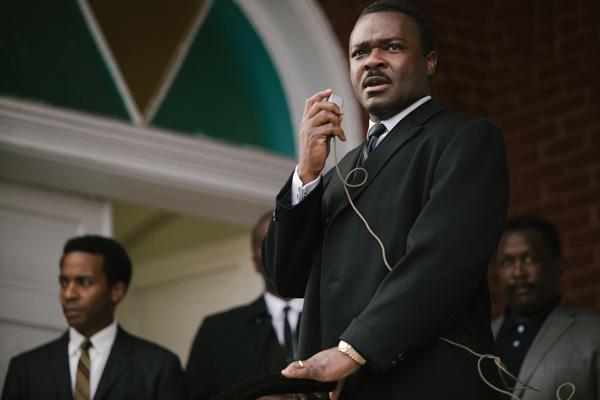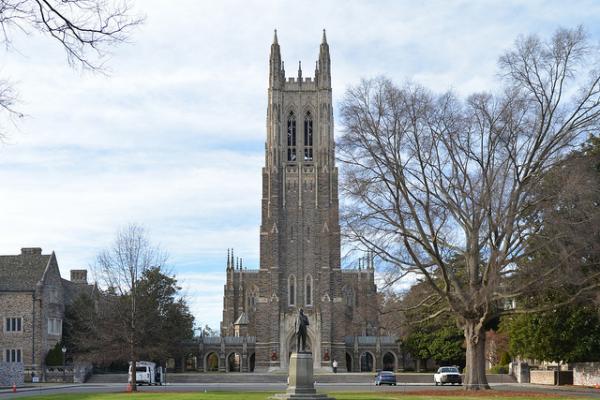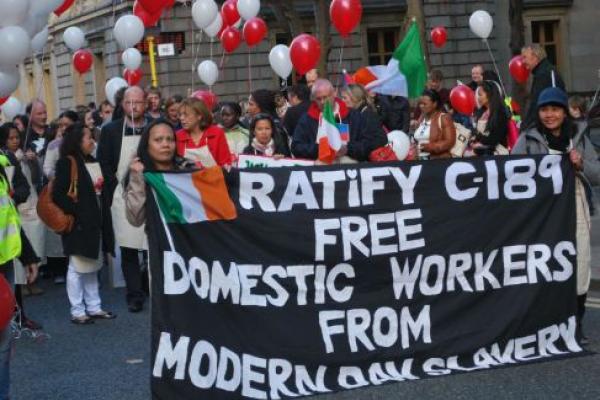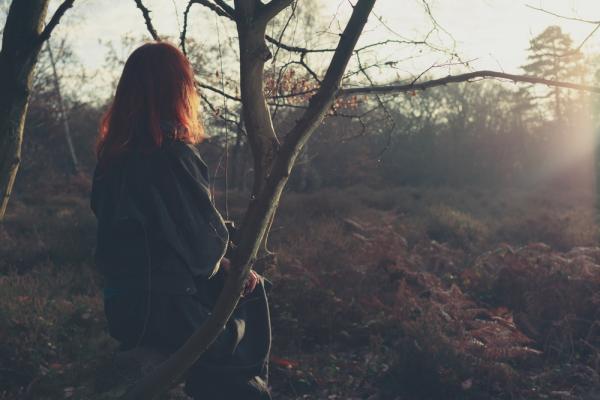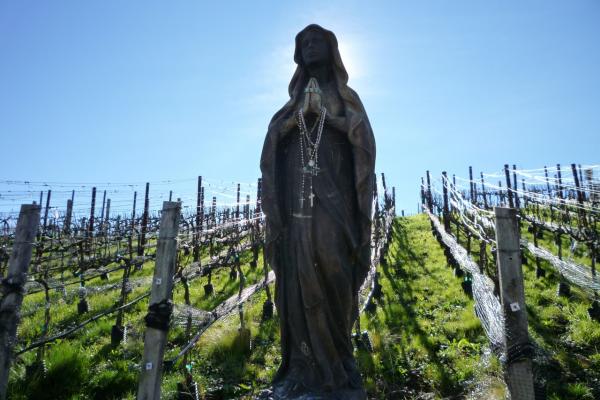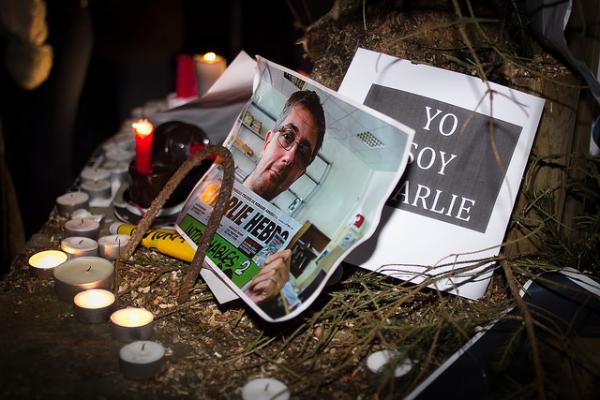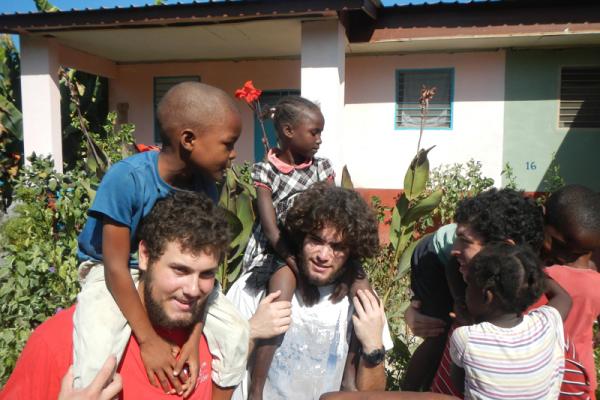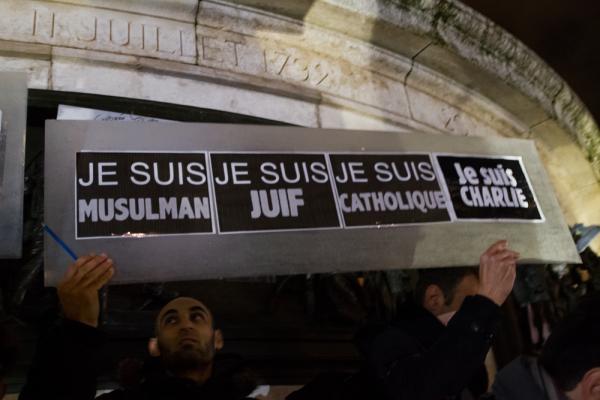On the Rev. Martin Luther King Jr.’s birthday (Jan. 15), just as the civil rights drama Selma was nominated for best picture in the Oscar race, one fact of American life was little changed.
Sunday morning remains, as King once observed, the most segregated hour in America. And, against a backdrop of increased racial tensions, new research shows that most Americans are OK with that.
Two in three (66 percent) Americans have never regularly attended a place of worship where they were an ethnic minority, according to new polling analysis released by LifeWay Research.
“People like the idea of diversity. They just don’t like being around different people,” said Ed Stetzer, executive director of the Nashville, Tenn.-based research firm.
“Maybe their sense is that church is the space where they don’t have to worry about issues like this,” he said. But that could be a problem, because, Stetzer said, “If you don’t like diversity, you’re really not going to like heaven.”
Officials at Duke University abruptly dropped plans to broadcast the Muslim call to prayer from the iconic bell tower of Duke Chapel after online protests led by evangelist Franklin Graham and unspecified security threats.
The decision on Jan. 15 came one day before the “adhan,” or traditional call to prayer, was to be broadcast from the heart of campus in Durham, N.C.
Michael Schoenfeld, a Duke vice president for public affairs and government relations, said in a statement the school remains committed to “fostering an inclusive, tolerant, and welcoming campus” for all students but “it was clear that what was conceived as an effort to unify was not having the intended effect.”
Schoenfeld said campus officials were aware of several security threats but declined to elaborate.
Graham, who leads his father’s Billy Graham Evangelistic Association from the other end of the state, in Charlotte, said the call to prayer includes the words “Allahu Akbar,” or “God is great,” which was shouted by Islamist militants during last week’s deadly attacks across Paris.
“As Christianity is being excluded from the public square and followers of Islam are raping, butchering, and beheading Christians, Jews, and anyone who doesn’t submit to their Sharia Islamic law, Duke is promoting this in the name of religious pluralism,” he said on his Facebook page.
North America is home to an estimated 1.5 million trafficked persons alone. Many of these people are domestic workers—an industry with a growing worth of $8 billion in profits every year.
Many domestic workers in the United States are hard working people who enjoy their jobs and have fair working conditions. But the private and unregulated nature of the job does make these workers vulnerable to exploitation and sometimes a destination job for trafficked women.
This is the problem that authorities grapple with: how to regulate a global industry where workers are so open to exploitation and abuse.
Enter Convention 189—a document that creates international law preventing the trafficking and exploitation of domestic workers like Erwiana. This new international law deals with much of the complexity of the problem while still allowing domestic workers to earn a fair living and bargain for their conditions.
National governments have begun to sign on to Convention 189, but the U.S. and other larger countries are lagging behind in its support for tougher global protections for domestic workers.
For many, these new global protections can’t come fast enough. We know that the more countries like the U.S. sign onto Convention 189, the more robust the law will be and the better the protection for domestic workers.
Occasionally our governments need reminding that the plight of some of the most vulnerable must become a priority. Join me in calling on the United States to support global protections for domestic workers by ratifying Convention 189.
On the night I came out, my mom didn’t sleep. She stayed up all night long, crying and praying to God, begging God that what I had said wasn’t true, and if it was, for God to show her some way forward. She waited desperately for a divine word to fall upon her like manna. When it didn’t, when the morning light came and her world was still warped, she got out of bed to go searching for her Lord. She figured God would be at the Christian bookstore.
She worked the aisles for an hour, flipping through books, setting them down, moving from one section to the next. When she found nothing remotely related to this, she started to panic. A store employee passed behind her and she grabbed her arm — asked her where the books on homosexuality were.
The girl gave her a puzzled look and then said:
“Oh. I’m sorry. But we don’t carry books like that here.”
My mom’s eyes blurred with tears. She nodded.
“You’ve got to be kidding me.” She muttered as the girl walked away.
“You’ve got to be kidding.”
On the drive back, she heard the girls’ answer twist and reshape in her mind:
Mothers like you with sons like that don’t belong here.
~
This past weekend, my mom and I recalled those early days as we walked down the streets of Portland, Ore. We had just finished up the final session at the annual Gay Christian Network Conference, and as we walked to our hotel to pack up our things, we felt at the strange seam stitching us from there to here: From hopeless and alone, to three years later sitting palms-raised, on the receiving end of so much hope and blessing and life from a gathering of Jesus-crazy LGBTQ outsiders. Through all the mess along the way, we managed to press on together, as a family.
It was a good thing for Trinitas Cellars that Cardinal Jorge Mario Bergoglio took the name Pope Francis, and not, say Pope Malbecius.
When the Argentine cardinal became pope in 2013, Trinitas didn’t have any malbec — the famous Argentine grape — in its cellars. But it happened to have a few barrels of cabernet franc.
Behold! Thus was born “Cabernet FRANCis,” a 2012 red wine from Trinitas, a Catholic-owned winery nestled behind the iconic grape crusher statue at the southern foot of the Napa Valley.
“People kept asking me, ‘Why didn’t you make the pope a malbec?’” said Garrett Busch, the 28-year-old CEO of Trinitas, as he spoke in the winery’s book-lined library tasting room, a bottle of the wine before him. “And I’m like, ‘Come on guys, he made it easy on us.’”
Actually, the story is a bit more complicated. Trinitas, which is owned by Garrett’s parents, Tim and Steph Busch, made the family’s Catholic faith a part of business since its founding in 2002. Meetings and special events begin with prayer, winery dinners start with grace, and the winery’s website announces the family’s intention to “serve God in all they do.”
Even its name is Latin for the Trinity of Father, Son and Holy Ghost.
Pope Francis on Jan. 15 condemned last week’s terrorist attack on the French satirical weekly Charlie Hebdo but warned there were limits on freedom of expression.
Speaking to journalists as he flew from Sri Lanka to the Philippines on a weeklong visit to Asia, the pope said freedom of expression was a “fundamental human right” and stressed that killing in the name of God was an unacceptable “aberration.”
“You don’t kill in God’s name,” Francis said.
However the pope, who has made a point of reaching out to Muslims, Jews, and other faiths, said there were limits to self-expression when it involved insulting or ridiculing people’s faith.
“You cannot provoke, you cannot insult the faith of others,” he said. “You cannot make fun of the faith of others.”
Christian missionary work spans the globe. But Jewish mission trips?
Your average American synagogue is not planning a congregational visit to a poor corner of the world. But a few are starting to, and some rabbis are lobbying for more to follow.
“At a time when synagogues are losing market share and ‘Next Gen’ Jews are deeply ambivalent about how much they are prepared to identify as Jews, I can testify that this kind of service mission is a game changer,” said Rabbi Sid Schwarz, founding rabbi of Adat Shalom, a Reconstructionist synagogue in suburban Bethesda, Md.
Unlike many Christian groups, Jews don’t believe in proselytizing: It’s just not in their religious DNA. But alumni attest that synagogue-sponsored mission trips provide a hands-on way for Jews to fulfill the obligation of “tikkun olam,” Hebrew for “heal the world,” as they strengthen Jewish identities.
Schwarz and 20 congregants returned from a 10-day trip to Haiti in December — the congregation’s third trip in four years to the outskirts of Port-au-Prince. There, they partnered with a pastor and used their bodies and their bank accounts to build houses and provide school tuition for Haitian families, many who had been living under tarps since the devastating 2010 earthquake.
Schwarz can point to less than a handful of synagogues that have done similar mission work. One is Temple Beth El in Hollywood, Fla., which has made more than 10 mission trips to Haiti since 2007 and leaves again for the island on Jan. 19.
“The Christians have a tradition of missionary work, and part of it is to Christianize the world. We Jews have no interest in Judaisizing the world,” said Beth El’s Rabbi Allan Tuffs. Nevertheless, “we should be out there.”
Our first response to the horrible and frightening violence of Paris should be grief. False religion always makes the religious grieve, but when it engages in ghastly violence against other human beings who are made in God’s image, it should break our hearts as it breaks God’s.
These hateful terrorists, masquerading as religious believers, said on video they were the “avengers” of the prophet Mohamed. As such, they murdered cartoonists in the office of a magazine they identified with blasphemy. What these killers, and those like them, don’t understand is that they are the real blasphemers now by forcing their false and murderous distortions of Islam on the world and on other children of God. Their religion is now violence itself, a blasphemous interpretation of Islam, which in its truest expression is a religion of peace. Rev. Wes Granberg-Michaelson, from the Reformed Church in America, has called Paris an “identity theft” of the Muslim faith. Several Muslim leaders have said that the damage terrorists like these do to the image of the Prophet Mohammed is much greater than any cartoonist could ever do.
While the tenet of freedom of speech has been invoked throughout the media coverage of the attacks, the religious implications here run much deeper. They are about how we in the faith community should respond when we are attacked by those who disdain us, disrespect us, distort us — as many believe the satirical French magazine, Charlie Hebdo regularly did — and even viciously attack us. The magazine has often crudely, provocatively, and even gleefully satirized all religions in very offensive ways, suggesting that the fundamentalisms in all our religious traditions completely define the meaning of faith. Charlie Hebdo is apparently driven by its own ideology of secular fundamentalism, which regularly strikes out at all people of faith.
I went to college thinking political activism was sexy. Living in a large city gave me unparalleled access to protests for countless good causes. Chanting at anti-war marches and getting arrested on behalf of climate change legislation would make interesting party stories, I thought. I quickly hopped on the Occupy Chicago bandwagon, a movement which calls for a more equitable wealth distribution, but whose leaders and participants were largely white college graduates. None of my organizing work focused on racial inequalities, but stayed in the realm of money in politics, equitable banking practices, and climate change.
My journey took a profound turn at an organizing training where I proudly stated I was there because my faith called me to advocate for the least of these. In response, a powerful, albeit brash, leader in Chicago’s movements angrily characterized me as an “activist do-gooder” who was fueled by the need to be a good white person. This label devastated me. I’m outspoken, passionate and willing to lead, I thought, so why can’t people see me as a resource? I took a break from the organizing world feeling disillusioned and miffed.
This attitude forced me to ask myself, why was I drawn to political activism in the first place? What was it that drew me to the movements in which I involved myself? And why was I so offended that someone had questioned my motives?
Wesley Granberg-Michaelson’s advice to Christian leaders: Discern God’s call and learn how to sustain your inward life for the long term.
“Leaders have to know who they are,” he said.
“When everything else crumbles and when you are in situations of disillusionment, when plans haven’t worked out, when colleagues have disappointed you, there’ll come those times when you say, ‘Why am I doing this?’
“At that point, what is needed is a deep and abiding sense of God’s call.”
Granberg-Michaelson’s call led him to take on a variety of roles in his career. He served from 1994 to 2010 as general secretary of the Reformed Church in America. He is the author of several books, including “Leadership from Inside Out: Spirituality and Organizational Change.”
Before that, he served as research assistant for U.S. Sen. Mark Hatfield, managing editor of Sojourners magazine, co-founder of a nonprofit organization, and director of church and society for the World Council of Churches.
Q: You’ve had a really interesting career, including working on Capitol Hill and in Geneva, Switzerland with the World Council of Churches. What did you learn from those roles?
Working in the U.S. Senate with Mark Hatfield is when I first learned about how important it was to have a group that had a deep level of trust together. And that you have to work on building that.
And then in the life of Mark Hatfield as a U.S. senator, I saw the importance of giving voice to crucial issues in ways that helped empower others. The role of prophetic ministry I really witnessed in his life in the U.S. Senate, the kinds of stances that he took against the Vietnam War, stances that were rooted in his own convictions.
Those were qualities that came out of his Christian character. But those were also qualities I saw and learned in that secular context.
When I went to Geneva with the World Council, I got to see the enormous complexities of how organizations function and how decisions are made. I was very involved in a restructuring effort.
We spent a lot of time figuring out models for how church bodies can govern themselves. And the World Council was in a deep discussion — conflict, really — with its Orthodox members at that point. I was involved in a special commission on relations with the Orthodox.
One of the key issues was how we make decisions. To the Orthodox mind, it was incomprehensible that a central committee of 150 people could meet together and by a majority vote determine God’s will.
That led to a whole fascinating journey that I’ve continued on ever since, to rethink how church bodies make decisions.
Out of that dialogue came an embracing of models of consensus decision making, which the World Council still uses today, where 150 people will come to a decision that they arrive at by consensus. It’s a discussion, a deliberation that’s led very carefully, very artfully, taking into account the opposing points of view and getting to a point where either the body as a whole agrees or a minority that may not agree are willing to say, “We will step aside and allow this to go forward.” Or convictions are held so strongly that the body as a whole decides it’s really not ready to decide this.
None of these functions by majority vote. It’s a very different model, and I think one that’s much more attuned to how the church could make decisions.
